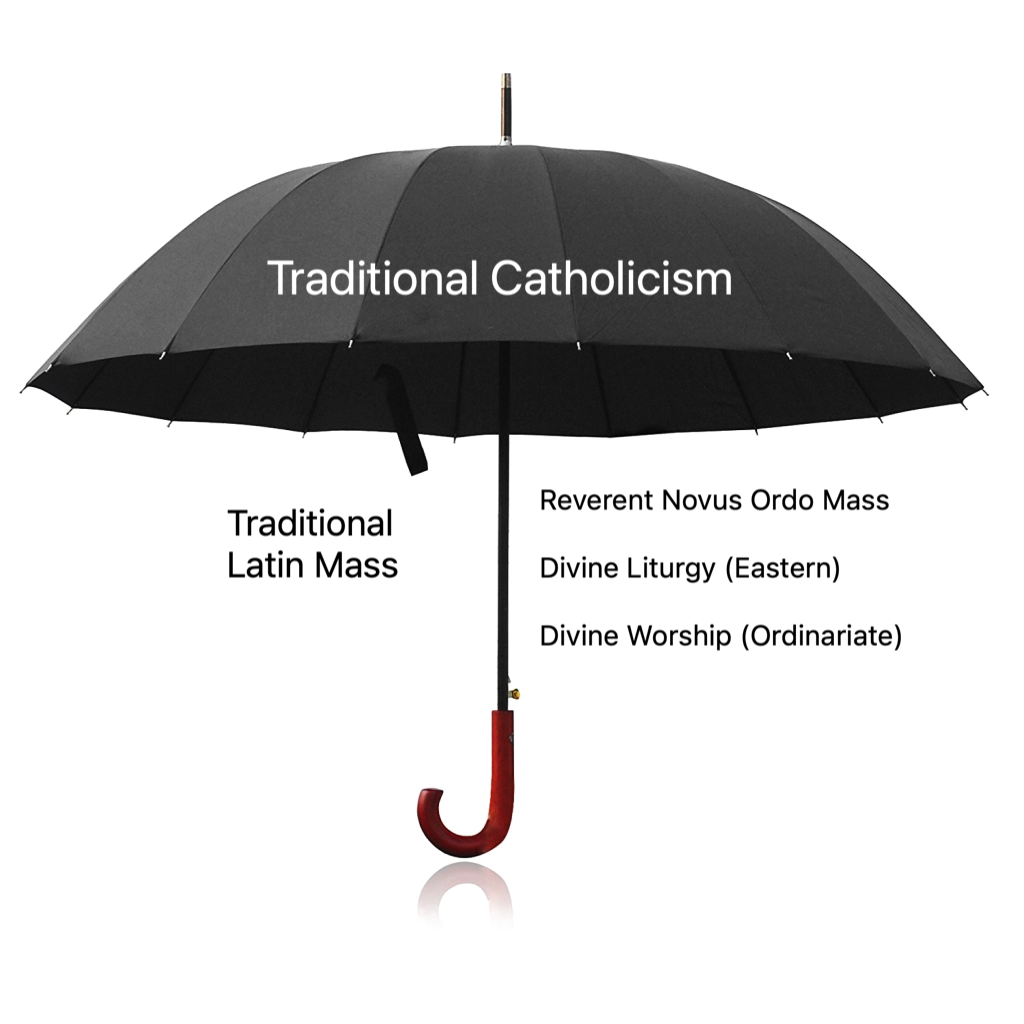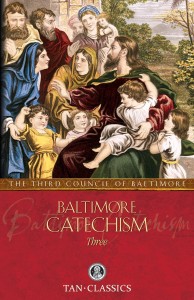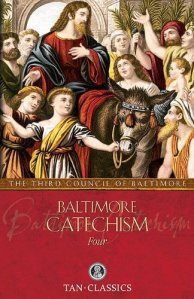A how-to guide on recognising and avoiding modernism. Here is the Syllabus of Errors. The Syllabus Condemning the Errors of the Modernists is here.
From Real Clear Catholic
By Shane Schaetzel
Great heresies never really die. Rather, they have a cycle to them. Sometimes they originate from within the Catholic Church, by some rogue priest or bishop, but most of the time they come from outside the Catholic Church. They find their way into the Catholic Church slowly and gradually, little by little, and before long the Catholic Church is overrun by them. The next phase of the cycle is expulsion of the heresy from the Church. This usually begins rather quickly after the infiltration of the heresy. In some cases, particularly early on in Church history, this was handled through ecumenical councils. In more recent centuries, it was done through papal encyclicals. However, the rebuff of these heresies does not guarantee their immediate expulsion from the Church. Historically speaking, the heresy persists for years, and sometimes decades and even centuries, before it is finally expelled from the Catholic Church.
Such was the case with the Arian Heresy, which up until now, had been the greatest heresy the Church has ever had to contend with. It began in the early 4th century, circa AD 315, shortly after the legalization of Christianity in the Roman Empire, and it quickly spread like wildfire. About ten years later, in AD 325, the matter was brought to an ecumenical council of the Catholic Church in the City of Nicea, wherein it was soundly condemned (read the story here). From this council came two great works, the Nicene Creed and the New Testament. Both would see their completion before the end of the century.
That, however, did not get rid of Arianism. The priest who founded the heresy (Arius) was soundly condemned at Nicea, but that didn’t stop him. He and his followers quickly turned to the state to spread their doctrinal poison, since the hierarchy of the Church was no longer available to them. In short order, regional governors were forcing bishops to profess Arianism or face civil penalty (which was quite harsh). This went on, intermittently, for centuries. Arianism continued to spread throughout areas claimed by Christianity, most especially among the Germanic tribes in northern Europe, until the middle 7th century, when it was finally expelled from Christianity entirely. A variation of it was then adopted by Mohammed and became part of Islam, where the heresy has remained ever since. It wouldn’t be seen again in the Christian world until after the Protestant Reformation, where it became primarily a Protestant Christian problem for Protestants to contend with. Today, Arianism exists in the Protestant world almost exclusively, primarily as the Jehovah’s Witnesses (Watchtower), Iglesia ni Cristo, Christadelphians and the Church of God General Conference.
The lesson of all this is that while the Great Arian Heresy was rebuked in ecumenical council rather quickly, it still took a century or two to stabilize the Church from its influence and damage, and a few more centuries to rid the Catholic Church from it in the missionary outreaches of the Church among the Germanic tribes. Big heresies don’t just go away. The biggest ones never go away. The best we can hope for is to rid the Catholic Church of them, which is a process that takes time, resilience and effort.
Moving on to the next great heresy, the one that affects our own time the most, and may possibly rival the tenacity of the Great Arian Heresy. I am speaking of the Great Modernist Heresy now.
It began in the 17th century in the form of The Enlightenment, which came about in response to the Protestant Reformation. As Protestant Reformers pulled much of northern Europe away from the Catholic Church, they quickly found that they could not get along with each other, in addition to their rivalry with the Catholic Church. Their opposition to Catholicism was the only thing they could agree on, but still their rivalries with each other caused a great deal of problems. In response to this, the Masonic Order (Freemasonry) was created, as a way for European Protestants to seek fraternal unity outside of their competing denominations. Within this environment, a new way of thinking emerged, wherein Christian religion was reduced to a more symbolic ideology rather than a dogmatic faith. By the 19th century, this way of thinking had affected many Protestant denominations, especially in the United States, where religious sects abound due to religious freedom in the US Constitution’s Bill of Rights.
Originally called “Liberalism” the name quickly morphed into “Modernism” by the early 20th century. By this time the Modernist Heresy was firmly planted within the Catholic Church. Problems in the United States were addressed specifically under the papal condemnation of “Americanism” in the Apostolic Letter of Pope Leo XIII, Testem benevolentiae nostrae. Both “Liberalism” and “Americanism” were eventually rolled into one heresy — Modernism. It is called this because it’s larger than both, and focuses intently on the modern world as the height of importance over Church teaching and practice. The tenets of Modernism are as follows…
Scripture
Modernism’s first victim is always Scripture. The “historical-critical method” was introduced to Protestant denominations in the 17th century, which reinterpreted Scripture in a Modernist way. This eventually resulted in backlashes in various forms in the 19th century, followed by the rise of “Fundamentalism” in the early 20th century. These consisted of Protestants who would not conform to the Modernist infiltration of Protestant denominations. Their solution was typical of Protestant methods. They broke away from their parent denominations to form new denominations. Modernism teaches that the Scriptures are not to be taken literally, but in the most symbolic way possible, so as to deny the miracles of Jesus Christ, as well as his claims to divinity. This eventually infiltrated the Catholic Church by the late 19th century, and became the dominant force in Catholicism by the late 20th century, following the Second Vatican Council (1962-1965).
Doctrine
Modernism teaches that doctrine evolves to adapt to the modern world, and what existed before is now irrelevant. Thus, old sins are sins no more. Old taboos need not be continued. Modernism asserts that mankind has evolved beyond these old superstitions that preceded the modern world, and the only thing that matters is the modern world. Instead, new sins and new taboos may replace the old ones as needed for integration with the modern world. In the Catholic Church, Pope Benedict XVI called this the “Hermeneutic of Rupture,” and it manifests in the notion that Vatican II (1962-1965) was a super-council that abrogated all Church teaching prior to it, allowing the Church to “start over” with a “clean slate” wherein new teachings, new truths, and a new morality can take shape. This is to “modernize” the Catholic Church and bring it into conformity with the modern world.
Liturgy
Modernism tends to focus on man more than God. Therefore, liturgy need not be as rigorous as what was seen throughout Christian history. Instead, liturgy can focus more on the community than on God. This means old liturgical customs can, and should, change to accommodate a greater focus on socializing. In the Catholic Church, this was finally manifested with the creation of the Novus Ordo (New Order) Missal in 1970, which was the creation of a whole new mass, rather than a mere translation and continuation of the old mass. To be clear, it is possible to celebrate the Novus Ordo Missal of 1970 in a very reverent way, that is close to the Traditional Latin Mass, except for language, prayers and some rubrics. The only problem is almost nobody does it this way. The new mass is often synonymous with the mindset that the focus should be more on the community than on God.
Like the Great Arian Heresy, the expulsion of the Great Modernist Heresy began almost immediately after it first infected the Catholic Church. Pope Pius IX began this process as early as 1864, while it was still called “Liberalism,” by promulgating his Syllabus of Errors. It was Pope Pius X who put the theological nails in the coffin of Modernism in his two powerful encyclicals in 1907, entitled respectively: Lamentabili Sane and Paschendi Dominici Gregis.
After these encyclicals, nothing more need be said. Modernism is condemned. It is not Catholic, and it is not possible for a Catholic to hold on to the tenets of Modernism and remain in the good graces of Holy Mother Church.
Still, that did not stop the Modernists. Failure to enforce the Encyclicals of Pope Pius X, has throughout the 20th century, resulted in a complete infestation of Modernist theologians, bishops and priests in the Catholic Church. The Second Vatican Council (Vatican II) did not affirm Modernism in any way, but it didn’t condemn it either. Furthermore, the Council being primarily pastoral in nature, something that had never happened before, did not attach a note of infallibility to any of its documents. As a result, the Modernists took this to mean the whole Council was infallible! And in modernist fashion began to use it as a pretext to nullify all previous Catholic teachings, customs, and practices. The decades that followed, 1970 to present, saw the most radical changes to Catholic life ever in Church history. While two popes presented some obstacles to the advance of Modernism, they were not able to stop it. Pope Benedict XVI probably did the most in the sense that he created a vehicle (Summorum Pontificum) that allowed for the resurgence of Traditional Catholic communities. Unfortunately, this was short lived, and his successor, Pope Francis, quickly nullified this (Traditionis custodes). However, what Benedict XVI had done, planting the seed of Traditional Catholicism back into the mainstream of the Church, allowed an acceleration of the movement against Modernism to take root, which it did. In France, for example, the ratio is rapidly turning in favor of Traditional Catholics, while the Modernists running the Church there are imploding. It is now estimated that Traditionalists will outnumber Modernists in France well before the middle of the 21st century. The most Pope Francis, and the other Modernists in the Vatican, can do is pump the brakes on the Traditional Catholic resurgence in the Church. They can slow it down a bit, but they can no longer stop it. Slowly but surely, the Great Modernist Heresy is following the pattern of all Great Heresies in the Catholic Church: infiltration to identification, renunciation to rapid expansion and finally expulsion.
When (not if but when) the Modernist Heresy is finally expelled from the Catholic Church, it will not go away entirely. Rather, it will take root in other forms of Christianity. It will likely finish off the Protestants during the remainder of the 21st century, and the Eastern Orthodox are only now starting to be infected by it. In the end, when it can no longer harm Christianity from within, we can expect civil governments to use Modernism as a pretext for persecution of the Christian Faith. We are already seeing the early stages of this unfolding both in Europe and the Anglosphere.
How do we deal with Modernism in our time? Dealing with it takes a comprehensive change in the life of a Catholic…
First, the Catholic must seek good liturgical formation. There are many outlets of Traditional Catholicism where this can take place…

- Find a Traditional Latin Mass Here.
- Find an Ordinariate Mass Here.
- Find a Reverent Novus Ordo Mass Here.
- Eastern Catholic Liturgies can be found in local internet directories.
Second, the Catholic will need good catechesis. I recommend Volumes 3 & 4 of the Baltimore Catechism. There is nothing wrong with the other catechisms available on the market. I am recommending the Baltimore Catechism (3 & 4) because of its systematic and time-proven approach.
Third, and lastly, study the Syllabus of Errors by Pope Pius IX, the Apostolic Letter of Pope Leo XIII, Testem benevolentiae nostrae, as well as the two great encyclicals against Modernism by Pope Pius X: Lamentabili Sane and Pascendi Dominici Gregis.


No comments:
Post a Comment
Comments are subject to deletion if they are not germane. I have no problem with a bit of colourful language, but blasphemy or depraved profanity will not be allowed. Attacks on the Catholic Faith will not be tolerated. Comments will be deleted that are republican (Yanks! Note the lower case 'r'!), attacks on the legitimacy of Pope Leo XIV as the Vicar of Christ, the legitimacy of the House of Windsor or of the claims of the Elder Line of the House of France, or attacks on the legitimacy of any of the currently ruling Houses of Europe.